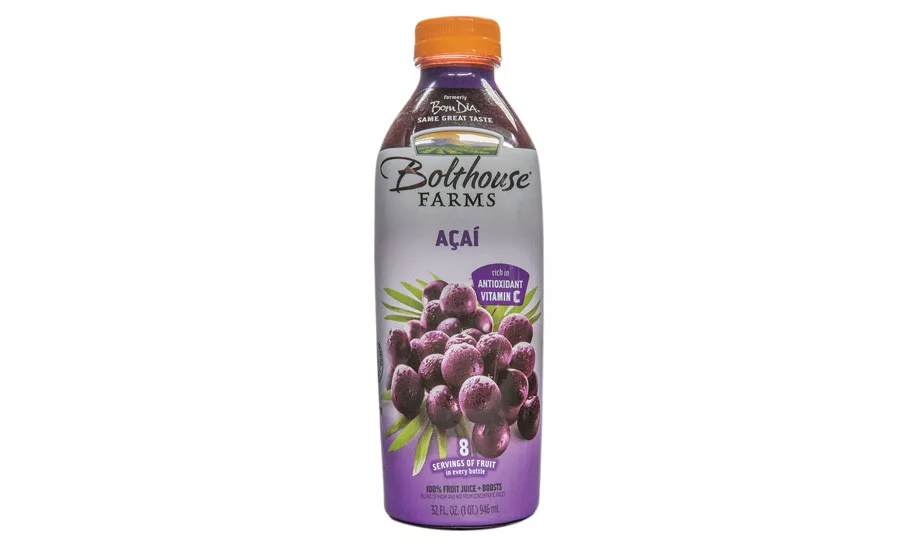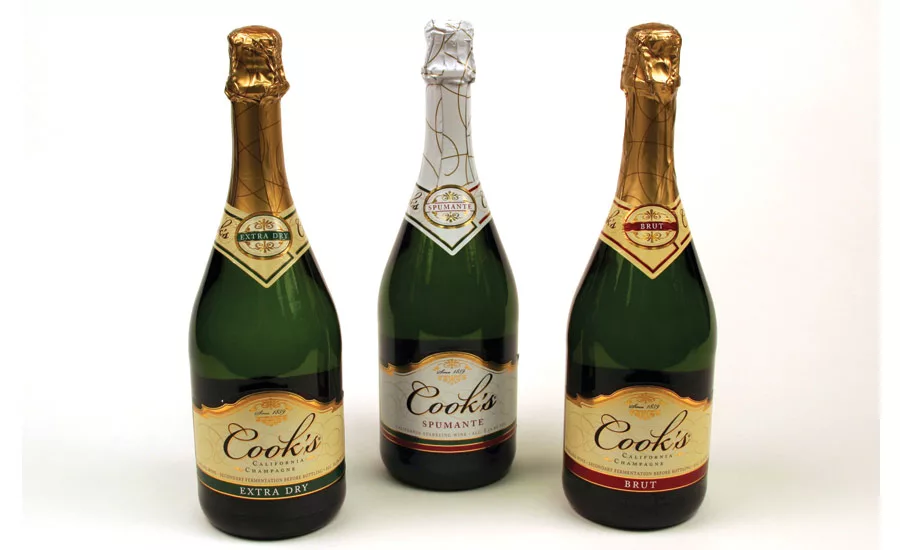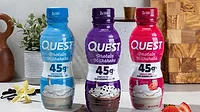Messaging, sustainability key drivers of labeling materials
Digital printing proliferates among labeling options



With its slogan “Porsche. There is no Substitute,” the luxury car brand has found a way to communicate to consumers the premium qualities of its brand. For beverage-makers, highlighting the quality of their products extends beyond formulation to packaging. Among the ways beverage manufacturers are looking to convey these qualities is through high-end labeling materials.
Packaging experts note that an onslaught of more premium beverages is creating a demand for more premium labeling materials.
Sustainability, functionality and new varieties of materials, including clear films, uncoated papers and wood veneer substrates, has translated into the use of clear/clean labeling materials to better showcase product contents, they add.
“Sustainability trends have translated into thinner materials (downgauging) as bottles have been lightweighted and developments with materials [help] support recycling efforts,” says Gwen Chapdelaine, marketing director at Elk Grove, Ill.-based Fort Dearborn Co. “… Depending on the objectives of the brand, the material used can help convey the messaging (e.g., uncoated for natural or artisanal look) and provide function such as film labels for beverages that need moisture resistance (e.g., ice buckets).
“We have seen a trend toward the use of more shrink sleeves on canned beverage products,” she continues. “Shrink sleeves offer flexibility with print options, quantities and customization versus pre-printed cans.”
A sustainable solution
In addition to premium branding, more beverage-makers are communicating their sustainability goals through labeling materials such as the use of recycled label stock.
“[L]ifestyle brands with sustainability goals are seeking the natural look of premium, uncoated performance papers for labels and other secondary packaging,” says Tim Boyd, market segment manager at Monadnock Paper Mills Inc. “Today, recycled label stock can be premium — there is no compromise in performance or aesthetics with post-consumer-waste fiber papers.”
The Bennington, N.H.-based company notes that consumers increasingly are making purchasing decisions based on a company’s reputation for sustainability. “It’s not just what’s in the product and [the] packaging,” Boyd explains. “It’s [about] how it is made — from responsible sourcing of raw materials, to the energy and resources required to make it, and how the manufacturing waste is controlled and diverted from landfills.”
Thinner films with a high-quality, tactile feel also are in demand, according to Justin Slarks, director of marketing for Sleeve Seal, Little Rock, Ark. “We’ve seen several manufacturers moving to recyclable materials in film and also moving to thinner films,” he says. “Manufacturers are responding to consumers’ desires to be more eco-friendly and offer recyclable packaging. The use of thinner PET (PETG) films for use with their labels is simple — lower raw material costs per impression and more impressions per roll, which means fewer changeovers and reduced shipping costs.”
The type of label material used often is determined by many client variables, including whether the beverage-maker has access to application equipment and bottles, has multiple bottling locations and/or uses a co-packing network to fulfill distribution needs, according to Louis Iovoli, vice president at Hammer Packaging, Rochester, N.Y.
“Material selection by decoration style (shrink sleeve, roll-fed, [cut and stack], pressure sensitive, etc.) has to be a common denominator like the bottle selection across varying platforms,” Iovoli says. “This is often a difficult decision matrix for packaging engineers.
“The primary trends that evolve from year-to-year are material reduction, environmental friendliness and shelf impact,” he continues. “The entire supply chain works to offer solutions that will serve as a common denominator across varying platforms. It’s a difficult task.”
Creativity counts
Paper, films and foils are popular label material choices, but some companies also are using screen/direct printing, hand painting or bottle etching, according to packaging experts.
The various options for inks, coatings and finishes also are making labels — and the brands they represent — pop, they add. Treatments include cold foil stamping, fluorescent, glow-in-the-dark, day glow, holographic, matte and glossy, metallic, pearlescent, scented, soft touch, tactile, and thermochromatic inks.
Fort Dearborn’s Chapdelaine says that digital printing, including the ability to personalize labels and variable imaging, also is having an impact within the beverage industry.
“Digital printing [will drive] more use for personalization, limited editions and regional promotions,” she says. “For promotional labels, we offer a variety of options, including digital printing, extended content, peel-n-reseal, peel-n-reveal, multi-packs and on packs.”
Additionally, Fort Dearborn offers a wide variety of paper and film substrates as well as design/finishing effects for the company’s five label technologies: cut and stack, pressure sensitive, roll-fed, shrink sleeve and stretch sleeve.
“For many beverage applications, companies are often looking for materials that offer water resistance, which are available in film options as well as wet-strength papers,” Chapdelaine explains. “For shrink sleeves, white film is available that is naturally white, reducing the need for printed white coverage or color bottles and provides functional light barriers (UV and visible light) for increased product shelf life.”
Although Hammer Packaging’s Iovoli suggests that shelf impact is selective, he notes that decorating style is crucial. “… We offer many options for the label … and can manipulate the base material many ways on the press to create truly unique looks.”
Hammer’s packaging engineers are engaged in all of the special effects needed to create brand appeal, he adds. “Premium beverages are still linked to common application methods. Typically, the effects created are done on converting equipment at Hammer,” Iovoli explains. “… The key to this is machinability and performance. A label has to not only look great, but it has to run at maximum efficiency.”
However, packaging experts note that the most critical determinants for beverage labels are performance, aesthetics and cost.
“As most buying decisions are made on the spot, a bottle with a label that is bubbling, changing color or peeling off likely will not be the option that the consumer chooses to take home,” Monadnock’s Boyd explains. “… Materials should match the brand aesthetic and overall brand image. That being said, with all the possibilities on- and post-press, almost anything is possible on a white label stock — textures, colors, emboss/deboss, foil, holograms and die cutting.
“… Designers are getting more creative with label stocks by adding printed ‘flags’ that protrude from the bottle neck,” he continues. “There’s also hand tags and foldouts, printing on the front and back of the labels revealing the message through clear beverage/bottles and inks that change color. Beverage-makers should ensure that the label substrate choice is part of the design process instead of an afterthought.”
Hammer Packaging’s Iovoli adds: “Materials range all over the spectrum of papers and films depending on the applicator, bottle type and desired look. … Film-based labels are preferred by many for their durability, look and ability to hold up in wet environments. Papers are still popular and are typically wet-strength for single-serve applications with C1S base-papers for many multi-serve containers.”
Experts say that the U.S. Food and Drug Administration’s new nutrition label requirements scheduled to go into effect by July 26, 2018, also could impact label materials and design.
Some companies already are making the required label redesign part of a more effective brand strategy. For example, Red Bank, N.J.-based Devotion Vodka already has added new nutritional information to its bottles of sugar- and gluten-free vodkas, the company says.
Now, and in the future, performance will be a key indicator of which substrates will work for a particular application, experts say. They add that innovation will continue within the packaging materials industry, including increased use of shrink sleeves on aluminum cans, more dynamic shrink rates for uniquely shaped containers, and the ability to scan a bottle and create a 3-D model or graphic on the bottle.
“Shrink sleeves continue to grow as a decorating technique,” Hammer Packaging’s Iovoli says. “… Brands get more space, more shape and can really reinvent their brands with sleeves. … We are a one-stop shop for going cradle-to-product maturity … and can present options for every label style and cost so [that] brands understand their choices.”
Sleeve Seal’s Slarks notes that increased speed during production is driving various changes within the shrink-label printing processes. “All of the related equipment is running faster, so labelers have to keep up,” he says. “Labelers will become more and more advanced in order to use thinner films … [and these] films also have to be more reactive to heat so that they can be shrunk more efficiently.”
Downgauging labels, a consistent push to eco-friendly labeling materials and consumer-brand engagement will remain top trends, Fort Dearborn’s Chapdelaine says. “Beverage companies can connect and engage with consumers through the use of [quick response] (QR) codes, digital watermarking, NFC or conductive inks on packaging.”
Monadnock’s Boyd notes that advances in digital printing technology are opening up a world of possibilities for brands that need smaller quantities of high-quality labels. “Digital print runs require less make-ready and allow [for] precise sheet counts that will inherently reduce waste,” he explains.
“In the future, I believe there will be less plastic packaging, like the biaxially oriented polypropylene film (BOPP) laminated labels [that are] prevalent today,” Boyd says. “… I also suspect that we’ll see more smart technology integrated into the label or the printing process for brand protection. Regardless, beverage-makers should choose suppliers that understand their business and its many diverse requirements.”
Looking for a reprint of this article?
From high-res PDFs to custom plaques, order your copy today!






